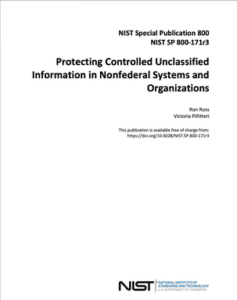The first thing you should determine is whether you even want to fulfill defense contracts. Many organizations began government contracting as a way to diversify their revenue streams. That’s still a valid reason, but companies need to decide if they’re in a position to dedicate the time and resources towards meeting the standards that are defined in these clauses, and still be profitable.
Next, you should map the presence of CUI in your organization, and determine how many of your systems, applications, and users are involved in processes that contain CUI. This will help you to understand whether CUI is pervasive throughout your organization, or whether it is contained within a few systems or user groups.
Once you have a scope of CUI-related environments, you can decide whether you should apply the new standards to a controlled subset of your business, or across the entire organization. Understanding the “scope of standards” will allow you to scale your expectations for the commitment of time and resources required to continue government contracting.
Brightline can assist with these steps. We will apply our experience in meeting NIST SP800-171r3 requirements for cybersecurity to your business which can shorten the overall process for becoming compliant. We offer the following services to jump start or lead your organization towards compliance.
Our Initial Engagement will provide you with information regarding DFARS, DFARS clauses, and the NIST SP800-171r3 standard and required documentation for you to meet your initial compliance.
With our Program Management, we take on the role of Compliance Specialist for your company. We provide on-going guidance and direction for implementing technical solutions to satisfy and maintain full compliance with NIST SP800-171r3.
 The US National Institute of Standards and Technology (NIST) promotes and maintains measurement standards and guidelines to help protect the information and information systems of federal agencies. In response to Executive Order 13556 on managing controlled unclassified information (CUI), it published
The US National Institute of Standards and Technology (NIST) promotes and maintains measurement standards and guidelines to help protect the information and information systems of federal agencies. In response to Executive Order 13556 on managing controlled unclassified information (CUI), it published